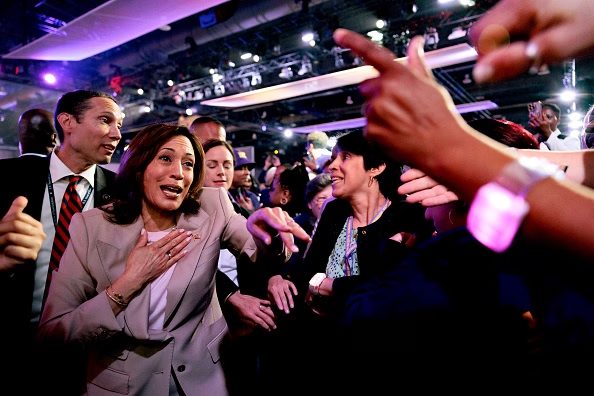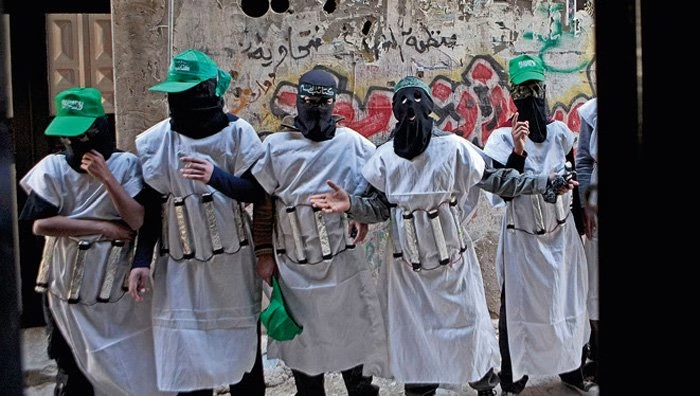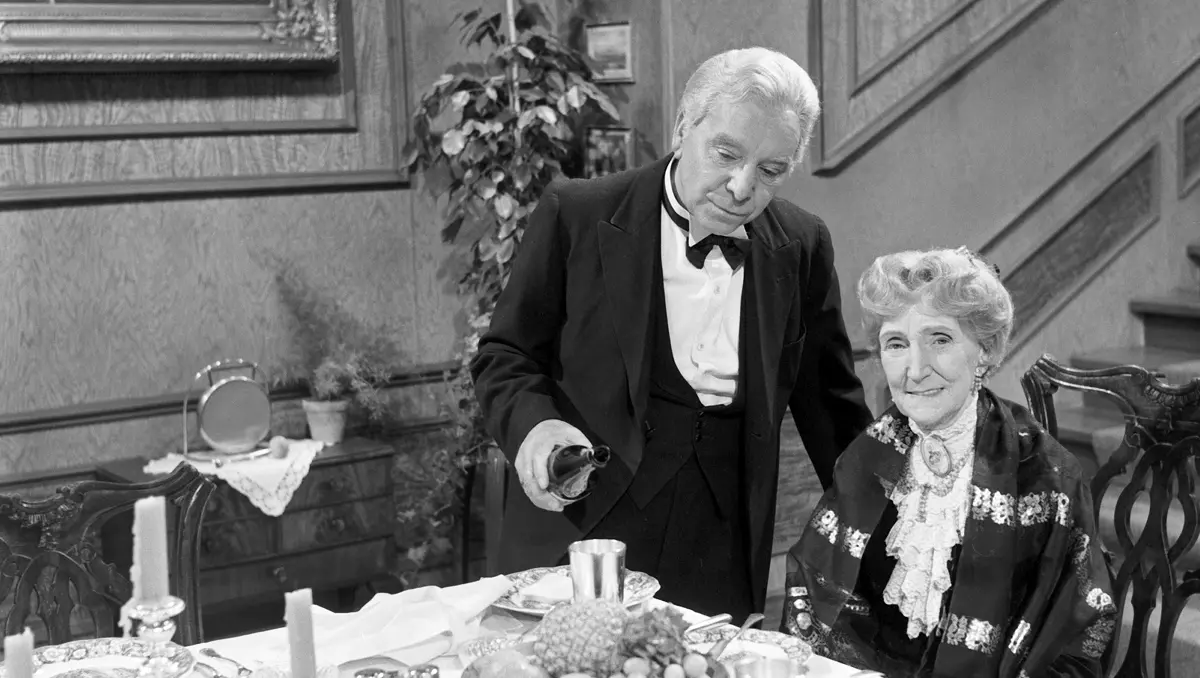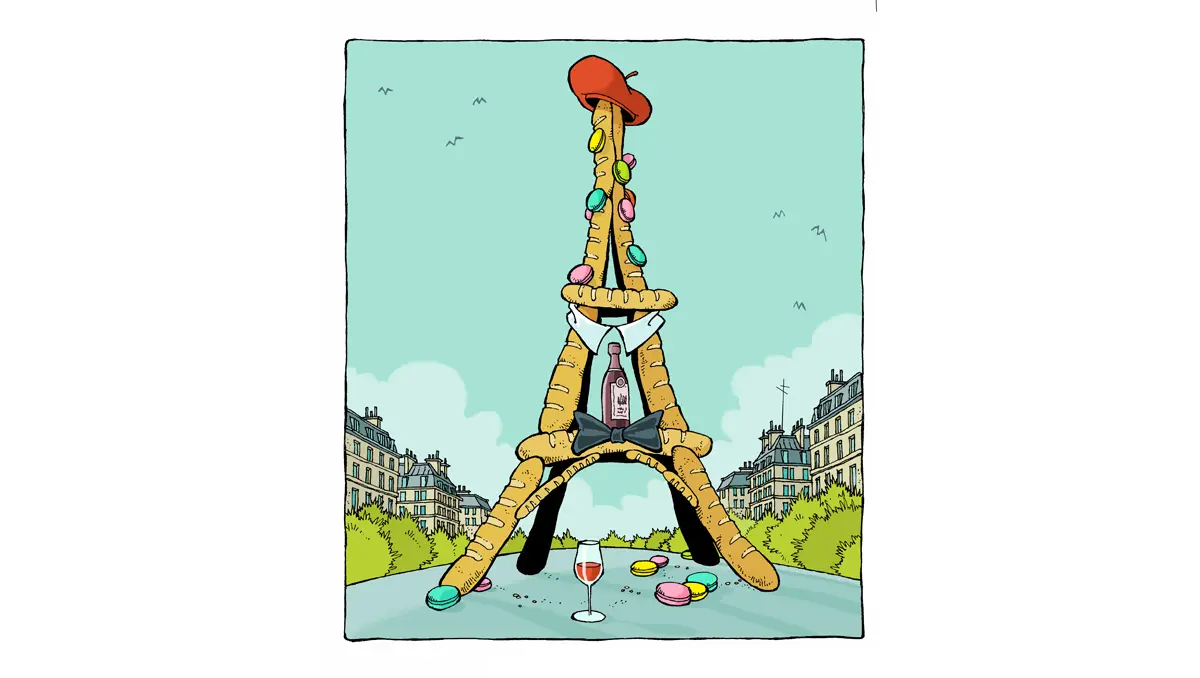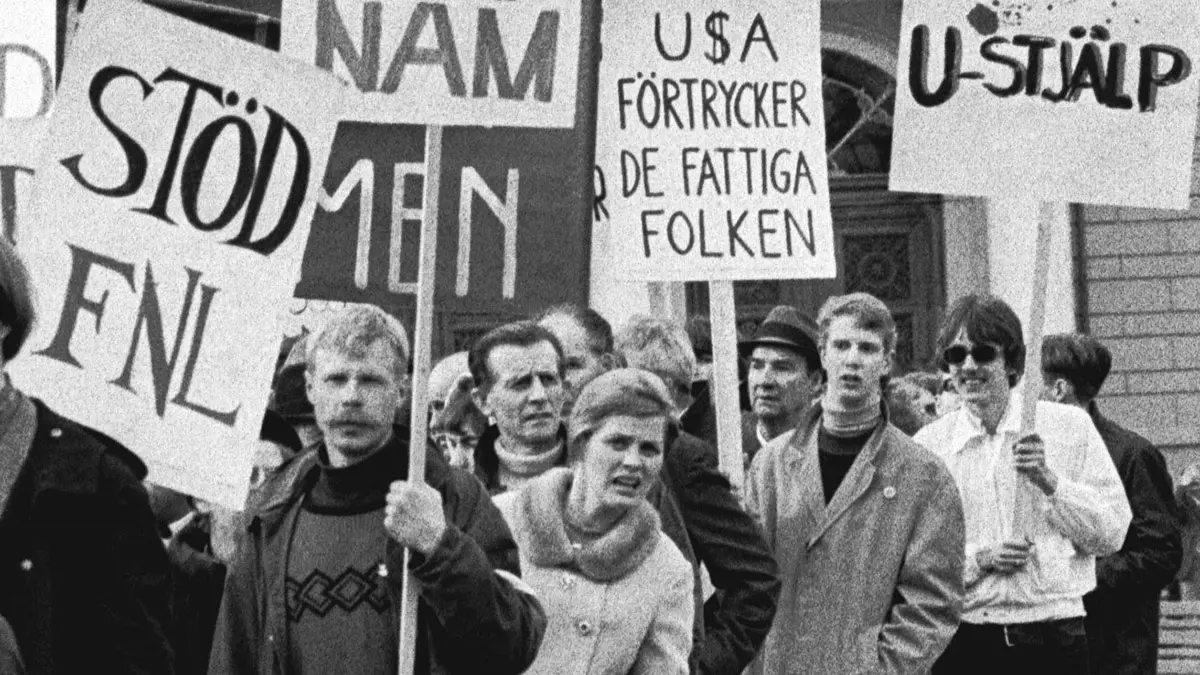It is also a walk from conventional to unconventional warfare, from a Eurocentric world driven by realpolitik in 1914 to a multipolar world driven by economics and ideas in 2008.
The Great War and its sequel of 1939–1945 made battleships obsolete. Mobility and cover in the form of submarines and aircraft carriers changed naval warfare, just as airplanes and tanks changed the mode of land combat. Total war between industrial states changed the global balance of power and the mindset of humanity.
Ninety years later, we are still struggling with the legacy of 1918. Traumas like the Second World War and the Cold War tend to obscure the defining moment of the modern era, the ultimate cataclysm that turned Europe into what the Czech politician Thomas Masaryk called a ”laboratory atop a vast graveyard”.
After an historical parenthesis between 1989 and 2001, we see many of the ghosts of the 20th century returning: the oil crisis, inflation, fear of nuclear weapons. In many respects, humanity is working itself even farther back in time, to the unsentimental competition among the great powers over raw materials that characterized the 18th and 19th centuries, with white colouring the places on the map where only pirates flourished.
The Cold War could be described as a Third World War, fought by proxy. Since 2001, we find ourselves once again in a global war – a Fourth World War, now on ”terror”. For anyone studying the First World War and its offshoot in the Middle East, some of the places the new war is being fought in are strangely familiar: Gaza, Basra, Baghdad. The historical link between the first three world wars continues through to the fourth.
The peace in 1919 left the major issues unsettled. The most important one then was the balance of power in Europe, where Germany, the loser, remained the strongest state in that part of the world. Uncertainties over Germany’s borders led to the Second World War and played a crucial role in the Cold War as well.
The question of the balance of power in Europe finally found a peaceful solution in 1991. Germany was free of occupying troops starting in 1994, and European wounds would be healed with the EU’s enlargement in 2007.
However, in the Middle East, the legacy of world war continues to cause problems. The war on terror is a result of a failed transition from Ottoman domination to national self-rule. The borders drawn in Eastern Europe after 1918 pointed to the Second World War. The borders drawn in the Balkans pointed to war after the partition of Yugoslavia. The borders drawn in the Middle East pointed to the conflicts and terrorism we see today.
The goals of the great powers during the First World War seemed rational, but the conflict quickly took on irrational features. According to the historian Jay Winter, it became a question of ”the continuation of hate by other means”. Exit Clausewitz, enter characters like Adolf Hitler and Osama bin Laden.
The shift was a result of the moral deformation of industrial war. From this perspective, there is both a geopolitical and cultural link between the First World War and the attacks of 11 September, 2001: nihilistic violence, the key role of media images, the complicated legacy of the Ottoman empire, explosive myths of betrayal and revenge.
When the old empires – the Russian, German, Austro-Hungarian and Ottoman – were swept away after the First World War, a wave of ethnic nationalism was set in motion. The Ottoman empire had long been on the decline. At its height, it stretched from the border of Hungary to the Atlantic coast of Morocco and the Persian Gulf.
The Turks’ alliance with Germany in 1914 sealed the empire’s fate. Iraq and Lebanon became, like Yugoslavia, what sociologists call ”imagined communities”. Given the violence in such countries since 1918, one cannot avoid asking the question: what would have happened had there been a softer, organic transition from the Ottoman empire to self-rule in the Middle East?
Turkey’s betting on the wrong horse was not a given. Russia was certainly their natural enemy geographically, but France and Great Britain had supported the Turks during the 19th century. The future of the Middle East and of Europe was to be decided by an ascendant Germany. It is not easy to see traces of this German influence today, but they can be read on the rusty sign ”Nach Damaskus” in London’s Imperial War Museum.
When the Turks declared war, Britain annexed Egypt and recognized the sovereignty of Kuwait. This decision was to have far-reaching consequences seventy-five years later, when Iraq invaded the oil-rich emirate. The invasion of Kuwait in 1990 led to the presence of American troops in Saudi Arabia, which in turn inspired Osama bin Laden’s terrorism.
The British marched into Mesopotamia in 1916. When British forces returned in 2003, it was the closing of a symbolic circle with a long line of events. The rhetoric was not new, as is clear in this article from The Times from December 1918 under the heading ”Arabs request British protection”:
”Arab opinion is all for British help. The inhabitants do not expect or desire that we should leave the country, knowing its control to be a task beyond their power. Because of the tribes, semi-civilized, turbulent, avaricious, and well armed, who might at any time plunge the country into general chaos, the British Army is essential to save Mesopotamia from disorder.”
While Britain attacked the Ottoman empire, an Arab revolt, encouraged by London, broke out. This insurrection would no doubt have been crushed had the British army not taken control of the entire area from Baghdad to Jerusalem.
The Arabs who made guerrilla raids on the Turks in 1917 felt like they had won the day, just as their Muslim brothers in Afghanistan were to do in 1989 after gaining US support. In both cases, unpredictable forces were mobilized in the name of a greater struggle, forces that would soon come back to haunt their sponsors.
The Arab revolt during the First World War was depicted in religious rather than national terms. One motive was said to be that the caliphate had become corrupt and that a new, truer Islam would be reborn in the home of the Prophet. By encouraging this view, the British helped to sow mental seeds for al-Qaida, which makes the same claims today.
After 9/11, Osama bin Laden spoke of Muslims suffering ”for the last eighty years” – a reference to 1918. From the Muslim perspective, the map of the Middle East is the result of invasions of Western crusaders. The creation of a Christian-dominated state in Lebanon, the green light for a Jewish state in Palestine and broken promises of various independent entities were seen as betrayal by Arab nationalists and by Muslims, ingratitude for their war efforts during the revolt in the desert.
Britain drew the map of Iraq at the Cairo Conference of 1921 and thus became the target of Mesopotamian discontent, which had been directed up until then at the Turks. Winston Churchill was content to have an Arab government that would serve British interests, so that he did not have to go on ”pouring armies and treasure into these thankless deserts”.
The aim in Mesopotamia after the First World War was to create stability, just like after the invasion of 2003. In a leader from 1918, The Times writes:
”[We] carried our arms to Baghdad and beyond, thereby raising our military prestige in the East to a higher point than it had yet attained… clearing away the ruins of Turkish maladministration for the foundation of stable and progressive government …All that is needed is reasonably good government.”
In one reader’s letter to the editor, the future of Iraq is painted in brighter colours:
”England has saved the country from utter ruin and its people from total destruction. The characteristic English sense of justice, fair play, and liberty on the one hand, and England’s centuries of administrative experience and leadership on the other hand, will enable, it goes without saying, Mesopotamia to recover its former position.”
Along with the geopolitical link between the First World War and the war on terror, there is also a cultural and psychological link. The historian David Fromkin writes:
”As the twentieth century dawned, Europeans were richer and more powerful than anybody ever had been before. They should also have felt more secure than anybody had felt before. But they did not. They – or at least their governments – were in the grip of fear. They sensed the tremors. Where or when, they did not know, but they were convinced an earthquake was going to strike.”
Fear has been a constant in the collective consciousness since 1914. Among Americans who voted for George W. Bush in the 2004 presidential election, 32 percent identified terrorism as the most important reason.
The diplomacy and military planning that led to the First World War were concealed from the average citizen. With the exception of Great Britain, no country held any parliamentary debate on its entry into the war. In the period 1914-18, there was a shift from mass ignorance of big politics to mass mobilization.
Nationalism, fascism and communism were part of the result. Modern terrorism is often a manifestation of these kinds of collective feelings and aims, closely associated with the means of mass communication that saw the light of day after 1914.
The Great War was the first media-driven conflict. In order to win circulation, the mass media exacerbated fears and national antagonisms. In his play Die letzten Tage der Menschheit, the Austrian satirist Karl Kraus describes how the press treated the war as the ultimate story. The newspapers shaped xenophobic alcoholics into a patriotic mass, ready to join the army for their country.
Similar observations have been made about the war on terror. Anti-Semitism and conspiracy theories in the Arab press are one example, the exaggerations in American newspapers prior to the invasion of Iraq another. Britain’s participation in the Iraqi War would have been politically impossible without the support of papers like The Sun and The Times.
One common feature of the First World War was the propaganda about infallible leaders. Joffre was ”imperturbable”, Hindenburg ”saviour of the Fatherland”, Kitchener ”the organizer of victory”. At the same time, censors forbid anything resembling criticism. The pattern was to recur in the US after 9/11. It was unpatriotic to question the strategy in the war on terror. Not until 2006 was this political taboo relaxed, with the result being the Democrats regained the majority in Congress.
One of the great industrial projects of the 20th century was the production of soldiers. Conscripts spent their first years as adults confined to army barracks. After demobilization, they often had to return for annual training. The result was a subculture of violence, obedience and hierarchy in civil society.
With its discrepancy between the promise of glory and the reality of trench warfare, WWI resulted in a widespread disappointment with traditional authority. The disillusion of the battlefield upended the old order. Nazism and fascism were the extreme results. Militant Islam is often seen as a parallel, with its disdain for consumer culture, its cult of youth, feelings, violence and death at the expense of enlightenment and compromise.
The precise moment of disillusionment is described in Erich Maria Remarque’s Im Westen nichts neues:
”The idea of authority, which they [teachers] represented, was associated in our minds with greater insight and a manlier wisdom. But the first death we saw shattered this belief. We had to recognize that our generation was more trusted than theirs.”
This industrial killing scarred the psyches of those who experienced it, but also left collective traces. In the sociologist Maurice Halbwach’s La mémoire collective, individual trauma is linked to the shared trauma. Organized, industrial warfare – modernity run amok – created enormous confusion. Memories of this painful paradox still lie under Europe’s surface ninety years later.
In La Grande Guerre from 1969, Marc Ferro describes the changes in Europe that preceded 1914:
”Traditional authorities like the monarch, priest, law, family and officer had been joined by new, anonymous and uncontrollable masters. These forces were responsible for the depression in European agriculture and the impoverishment of rural populations, and for the unpredictable business cycle. In this strange, changing world, traditional patterns of life no longer had any meaning.”
In such a topsy-turvy world, war was considered by many people to be a revival of comprehensible virtues. No one expressed this feeling as vividly as Ernst Jünger in his eyewitness account In Stahlgevittern:
”Grown up in an age of security, we shared a yearning for danger, for the experience of the extraordinary… We had set out in a rain of flowers, in a drunken atmosphere of blood and roses. Surely the war had to provide us with what we wanted; the great, the overwhelming, the hallowed experience. We thought of it as manly, a merry duelling party on flowered, blood-bedewed meadows.”
Another person who complained about this lack of purpose was Adolf Hitler, in Mein Kampf:
”As a young scamp in my wild years, nothing had so grieved me as having been born at a time which obviously erected its Halls of Fame only to shopkeepers and government officials. The waves of historic events seemed to have grown so smooth that the future really seemed to belong only to the ’peaceful contest of nations’; in other words, a cosy mutual swindling match with the exclusion of violent methods of defence.”
Europe was caught up in a Nietzschean mood in a reaction to this cosiness. God is dead! In July 1914, Winston Churchill wrote to his wife:
”Everything is tending toward catastrophe and collapse. I am interested, geared up and happy.”
Social Darwinists propounded the paradox that a nation’s fitness to survive depended on the readiness of its individual members to die. Even an American like Theodore Roosevelt realized that ”No triumph of peace is quite so great as the supreme triumph of war… All of the great races have been fighting races.”
This Western line of thought has a mirror image in the Muslim concept of asabiya, as described by the historian Ibn Khaldun: the group with the hardest fighting spirit will prevail, until it goes soft and in turn is overtaken by a new group.
The First World War was an answer to the confusion of the times. The psychological parallels to the Islamic terrorism of the 21st century are visible: a violent response to modernity, a cult of sacrifice and death, articulated by intellectuals with claims of acting in the interest of the masses. The countries that produced the 9/11 hijackers, Egypt and Saudi Arabia, are experiencing a parallel modernization comparable to Europe’s before the First World War.
After war comes demobilization. Victors welcomed home with celebrations have a relatively easy time adapting. For obvious losers, like Germans or Japanese after the Second World War or Americans after Vietnam, the emotional trauma of war is heightened. An ambiguous end to war, like in 1918, leaves even more complex scars.
One could argue, as do historians Stephane Audoin-Rouzeau and Anette Becker, that the German army never demobilized after the First World War. The political violence of 1920s Germany, Nazism and the Holocaust are all connected with the brutalization of trench warfare. Even though Germany was de facto on the verge of losing the war in 1918, many veterans felt they had won a moral victory but had been stabbed in the back.
The discrepancy between the perceived and actual outcome of war also plays a part in Islamic terrorism. The terror network al-Qaida arose as a result of the struggle against Soviet involvement in Afghanistan. Islamic warriors proved victorious when the Soviet empire crumbled. However, their success was not attributed to Islam but instead to liberalism and the US – phenomena despised by the Islamists even more than communism. Nor did the fighting in the Afghan mountains lead to any wave of Islamic resurrection in the Middle East. Acts of terror against the US and Saudi Arabia – the main supporters of the Afghan resistance – became a continuation of the war efforts, not so different from the political terrorism in interwar Germany in terms of its psychological background, totalitarian aspirations and marriage of nihilism and idealism.
The Arab revolt against the Ottomans was another successful war that did not yield the political result the combatants had intended. British statesmen used the Arabs like any other weapon. Arab independence was a means of weakening Turkey rather than an end in itself. Consequently, there emerged a sense of betrayal, articulated by T.E. Lawrence, who called his leadership of the revolt in the desert his ”mantle of fraud”.
To drive Russia out of the First World War, Germany helped Lenin make a comeback in his homeland, in Winston Churchill’s words, ”in the same way that you might send a phial containing a culture of typhoid or of cholera to be poured into the water supply of a great city”. Bolshevism was only the first of these war-borne epidemics.
The concept of Weltkrieg was also a product of the war; Germany in particular tried to extend the conflict beyond Europe. Most importantly, the war resulted in the isolated US being forced into the centre of international politics.
Propaganda took a 180-degree turn with US mobilization. The anti-war movement was suddenly confronted with hostility. The dean of the University of Minnesota Law School argued that ”wartime is no time to quibble about constitutional rights and guarantees” – a patriotic declaration not unlike those that were to follow 9/11.
The US entry decided the outcome of the war. After four years of fighting, the Germans had crushed the Russian military power, demoralized the French and denied the British army any clear-cut success. But Germany lacked the resources to challenge the US.
The end of the war came when the German leadership decided to approach the Allies using President Woodrow Wilson’s Fourteen Points as the basis of negotiations. The peoples of Africa and Asia likewise brandished Wilson’s program and demanded independence. Taking the long view, Wilson turned out to be a more successful revolutionary than Lenin.
”‘Self-determination’ is not a mere phrase”, Wilson told Congress. ”It is an imperative principle of action.” From the outset, prescient Americans sensed the dangers implicit in this philosophy. In his diary notes from 1918, the US Secretary of State Robert Lansing wrote that the promise ”will raise hopes which can never be realized. It will, I fear, cost thousands of lives.”
As the historian Niall Ferguson has noted, Wilsonianism suffered from three weaknesses: It was hypocritical in view of US involvement in Latin America. It would lead to an even greater Germany given the ethnic map of Europe. Above all, it could not be sold to a sceptical American Congress.
The result was that Wilson’s ideals were only half-implemented. The victors of the war, claiming that they had been fighting for the right to self-determination, applied it only when it was in their own interest. Sudeten Germans were attributed to Czechoslovakia, Hungarians in Transylvania to Romania. The map of the Middle East was shaped haphazardly, in sharp contrast to Wilson’s twelfth point: ”…the other nationalities which are now under Turkish rule should be assured an undoubted security of life and an absolutely unmolested opportunity of autonomous development.”
The shift in American foreign policy in the period 1914–1917 was repeated after 9/11. Gone was the earlier emphasis on realpolitik and isolationism. In his speech to the UN in September 2002, President Bush closed the historical circle by connecting Iraq/Mesopotamia to the new threat: ”Our greatest fear ís that terrorists will find a shortcut to their mad ambitions when an outlaw regime supplies them with the technologies to kill on a massive scale.”
Along with these geopolitical, cultural and ideological links between the First World War and the war on terror, there is also a tactical and technological connection. The Great War may have been a powder keg waiting to blow for structural reasons, but it was in fact triggered by the act of a terrorist.
The assassination of the Austrian heir apparent, Franz Ferdinand, in Sarajevo in 1914 was irrational from a Serbian nationalist point of view, since the archduke represented the soft line within the Austro-Hungarian leadership. Even Hitler noted how the attack was a contradiction: ”The greatest friend of the Slavs had fallen beneath the bullets of Slav fanatics.”
However, if the purpose of the murder was to instil fear and mayhem, the perpetrator was unbelievably successful. Five years after the shots were fired by Gavrilo Princip, some ten million people had been killed and the map of Europe had been redrawn.
The 9/11 terrorist attacks were the 21st century’s shot in Sarajevo. In both cases, it demonstrated the potential for political terrorism in an open world. In both cases, the violent deeds of individuals had epic consequences.
Another tactical link between the First World War and modern terrorism is the bomb attack on the King David Hotel in Jerusalem in 1946, which killed 91 people. The deed was carried out by the Jewish organization Irgun, which had fought the British administration because it was preventing Holocaust victims from coming to Palestine. The restrictions on immigration were part of Britain’s attempt to appease the Arabs. Several aspects of this terrorist act can be traced back to the First World War: the extermination of European Jews, the British mandate of Palestine, Britain’s complicated relations with both Arabs and Zionists.
Just like the earlier Serbian terrorism and the later Palestinian terrorism, Irgun’s activities could be described as successful, from the perspective of the perpetrator. The same can be said about al Qaida after 9/11: the US invasion of Iraq has given Islamists good PR and destabilized the Middle East.
Germany’s decision in 1917 to resume unrestricted submarine war was the opening shot for a new type of warfare with elements of terror. It is a classic example of how a new weapon system creates its own incentives, a technological solution to a political problem, in essence irrational, just as German planes invaded France via Belgium in 1914 or US cruise missiles attacked Iraq in 1998.
Tear gas was used for the first time by the Germans on the Western Front in 1915. Like flame throwers, the tear gas contributed to the industrial terror of the battlefield but could not break the deadlock. The use of gas symbolized a shift from battle to extinction. Like tanks and heavy artillery, it required an enormous industrial base, and as a result took the violence to a new level.
Along with the bomb raids by zeppelins, the most striking weapon of terror in the First World War was the Pariskanone or Paris gun. It was developed by Krupp and used to hurl ballistic grenades over 100 km from the Western Front to the French capital. In all, it killed 260 civilians.
Unrestricted industrial war stands in contrast to traditional moderation in conflicts. In The Seven Pillars of Wisdom, T.E. Lawrence describes the Arab warrior’s code of ethics, in contrast to that of the Great Powers:
”The first rule of Arab war was that women were inviolable: the second that the lives and honour of children too young to fight with men were to be spared: the third, that property impossible to carry off should be left undamaged.”
In the film Lawrence of Arabia from 1962, this contrast between ”oriental” and Western thinking is romanticized in the following exchange:
”God help those trapped under such appalling fire”, says Omar Sharif as the Arab chief.
”But they’re Turks”, says Peter O’Toole as Lawrence.
”God help them anyway”, responds Sharif.
Translated by Susan Long

Redan prenumerant?
Logga inUpptäck Axess Digital i 3 månader utan kostnad
Allt innehåll. Alltid nära till hands.
- Full tillgång till allt innehåll på axess.se.
- Tillgång till vårt magasinarkiv
- Nyhetsbrev direkt till din inbox




